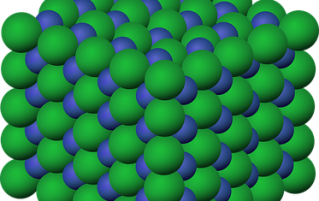

When you get into the bath, the water level goes up – you would expect it to. But if you pour a handful of salt (for example sodium chloride) into a glass of water, the water level will go down! This is because the solvent molecules (the water molecules) become more ordered when they are near to the dissolved ions (sodium ions and chloride ions).
If you are in Year 9 upwards you need to be able to explain how and why ions are formed. You also need to be able to draw diagrams to show ionic bonding, and predict the formulae of ionic compounds.
To help you with this try Part 1 of our “How to work with Ionic Bonding” revision guide. It recaps what ions are, and which ions you need to remember. Included is how to draw dot and cross diagrams to represent ionic bonding. There are also some example questions and answers for you to check your understanding.
Click on the picture below to see the guide.
If you found this useful and think you would benefit from some additional help, please contact us.
